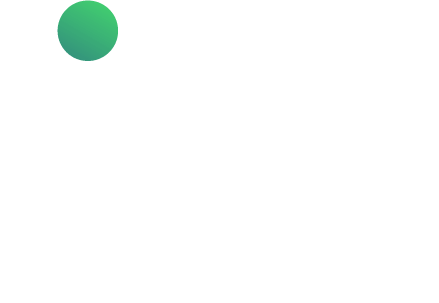The Future of Video for Creative Agencies Report
By the World’s Largest Creative Agencies

Report Collaborators:
Combined with wider industry data, we want to show you how top agencies have adjusted to the new era of WFH — what’s worked and what lessons have been learned along the way.
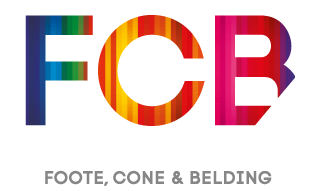
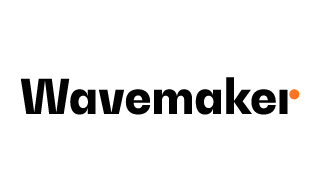
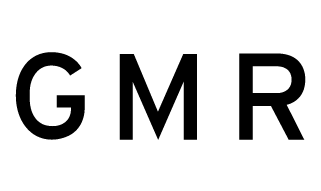
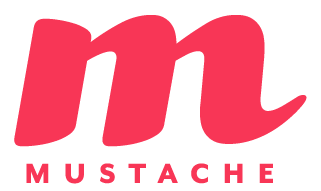
What will you learn
As you’ve heard over and over again, we are living (and working) in unprecedented times. When the pandemic hit and lockdown measures took hold, the work-from-home revolution truly began. The ‘new normal’ will largely be shaped by our response to this change.
In order to stay up and running, creative agencies had to, well, get creative. As a software provider to a number of large creative agencies, we have first-hand insights into the challenges agencies face, as well as the cutting-edge solutions available to them.
Particularly when it comes to video, file sizes and bitrates present significant obstacles to collaboration and access. In order to match current and future demands for video content in a work from home (WFH) environment, teams have to overcome:
Slow WiFi, further burdened by other family members or housemates being online at home more.
Limited access to media files and footage from outside networks.
Issues with software licenses on home equipment.
Poor performance of home equipment, as compared to office workstations.
Creative slumps as a result of not being able to meet in person and work physically together — for instance, quickly showing someone else a scene or clip or discussing an idea.
Security concerns and permissions controls for files and media.
Difficulty honing briefs, given a new inability to meet in person with colleagues and clients.
Creative agencies and creative problem-solving

Kerry Hill
Director of Production
FCB, North America


Eli Ash
Director of Production
Mustache


Georgine Hajjar
Creative Director
Wavemaker


Andy Hayman
Head of Content and Production
GMR Marketing

To inspire creative problem-solving and foster success, we’ve spoken with four leading creative agencies to learn all about how they’ve overcome remote workflows and laid the groundwork for an industry-wide ‘new normal’.
Combined with wider industry data, we want to show you how top agencies have adjusted to the new era of WFH — what’s worked and what lessons have been learned along the way.
92%1 of digital marketers say video is an important part of their strategy, and those who use video see their revenue grow nearly 50%2 more quickly than those who don’t. Making sure that your agency is able to tap into this growing revenue stream should be a top priority when thinking about a ‘new normal’.
What this report will deliver
Our goal is to set out a strategic vision for the future. That means looking at how leading agencies approached lockdown, and the next steps being planned. It also means looking at the long-term challenges faced, and aligning them with technological and process-based solutions. Disruption is always an opportunity. By making the right short-term investments, you can reap long-term rewards.
A silver lining to this pandemic and WFH cultural shift is the state of modern technology. Cloud-based solutions have empowered industries of all kinds to embrace remote workflows without significant disruption.
IPV is at the forefront of a large shift already impacting creative agencies — mainstreaming access to broadcast-grade media asset management (MAM) tools. Although most agencies use some sort of video content management (VCM) system, far more sophisticated options have become available over the last five to ten years. Although arguably interchangeable terms, MAM is coming to replace VCM as the central tool able to augment video production workflows.
Now, let’s get creative!
Confronting lockdown
Events in the first half of 2020 moved incredibly quickly, and businesses had to make swift decisions. The creative agencies we spoke with mirrored industry-wide trends — quick thinking allowed a majority of teams to report no impact on their overall productivity. Although 20% of teams did see a negative impact, 15% reported positive outcomes3.
80% of teams' productivity remains as good or better
Q: How has the move to remote work impacted your team's productivity?
Of course, productivity is outcome-focused — for many teams, the transition itself presented a number of new obstacles. In the process of transitioning to WFH, most creative teams saw issues arising from three main areas:
1. Environment
Office culture creates certain social dynamics. Seeing team members and having informal chats about work throughout the day, eating meals together during breaks, being able to meet clients in-person — each of these improves collaboration and comradery. In fact, it’s estimated that most office workers only spend 40% of their workday performing essential job duties4.
For agency teams, being isolated at home could interrupt creative rhythms and group dynamics. Outside contractors and freelancers were likely more accustomed to this style of working. But still, many freelancers rely on occasional physical meetings.
Q: Is technology available for your team to work remotely as needed?
2. Technology
Nearly half of those reporting an adverse effect of the lockdown on their workflow identified technology issues as a key factor driving the problems. For remote workers, hardware, software, file access, security, and download speeds all pose unique challenges. Of course, technology might not present a significant problem for individuals doing infographics, graphic design, or web banners. But they are pressing issues for those dealing with photography and video.
Big files, big trouble
A standard PRORES 422 HQ at 1080 and 30fps is around 1.7GB per minute of footage. Even pre-lockdown, 77% of teams reported that file size presented a challenge when sharing files between locations. This issue scored significantly ahead of security (29%), firewalls (27%), and transfer reliability (23%), although the latter can also be a product of file size.
Before lockdown, 55% of teams reported that they’d been using shared intranet or local servers — a solution that gives fast access to files, if you are on site. Home connections are slow, and those networks aren’t optimized for remote access or uploads.
3. Disrupted project pipelines
As a result of rapidly changing circumstances, a number of projects, processes, and expectations were turned upside-down. Disrupted project pipelines were often the result of ‘things we can no longer do’. Some projects got stuck in pre-production, and others were halted mid-production. Studios were out of action, and equipment rental companies shut their doors. And even if teams had their own equipment, shooting high-quality content while adhering to social distancing guidelines generated its own unique set of challenges.
Video production: Where all three issues meet
Q: Which of the following service offerings do you see greatly increasing in the future for your group?
All three of these issues — environment, technology, and disruptions — came crashing together for video production. Video remains one of the core outputs for creative agencies, with 73% of agencies stating that they provide video production in ‘traditional services’, and 63% saying that they offer online video as a ‘digital service’.
And it’s not like video project pipelines could be easily switched off — looking to the future, 62% of agencies predict significant increases in their video production output and 34% predict similar rises in their online video creation services.
Innovative approaches to novel problems
Before lockdown measures were introduced, 61% of teams were committed to working from one domestic location. Acclimating to working remotely in such a short period meant a steep learning curve.
Q: At how many locations do your team members reside?
How could employees produce professional-level work on personal equipment?
What about software licenses, storage solutions, and access issues?
How could filming continue when everyone was stuck at home?
Luckily, the world’s best creative agencies were ready to do whatever it took to ensure operational continuity and prepare for an uncertain future.
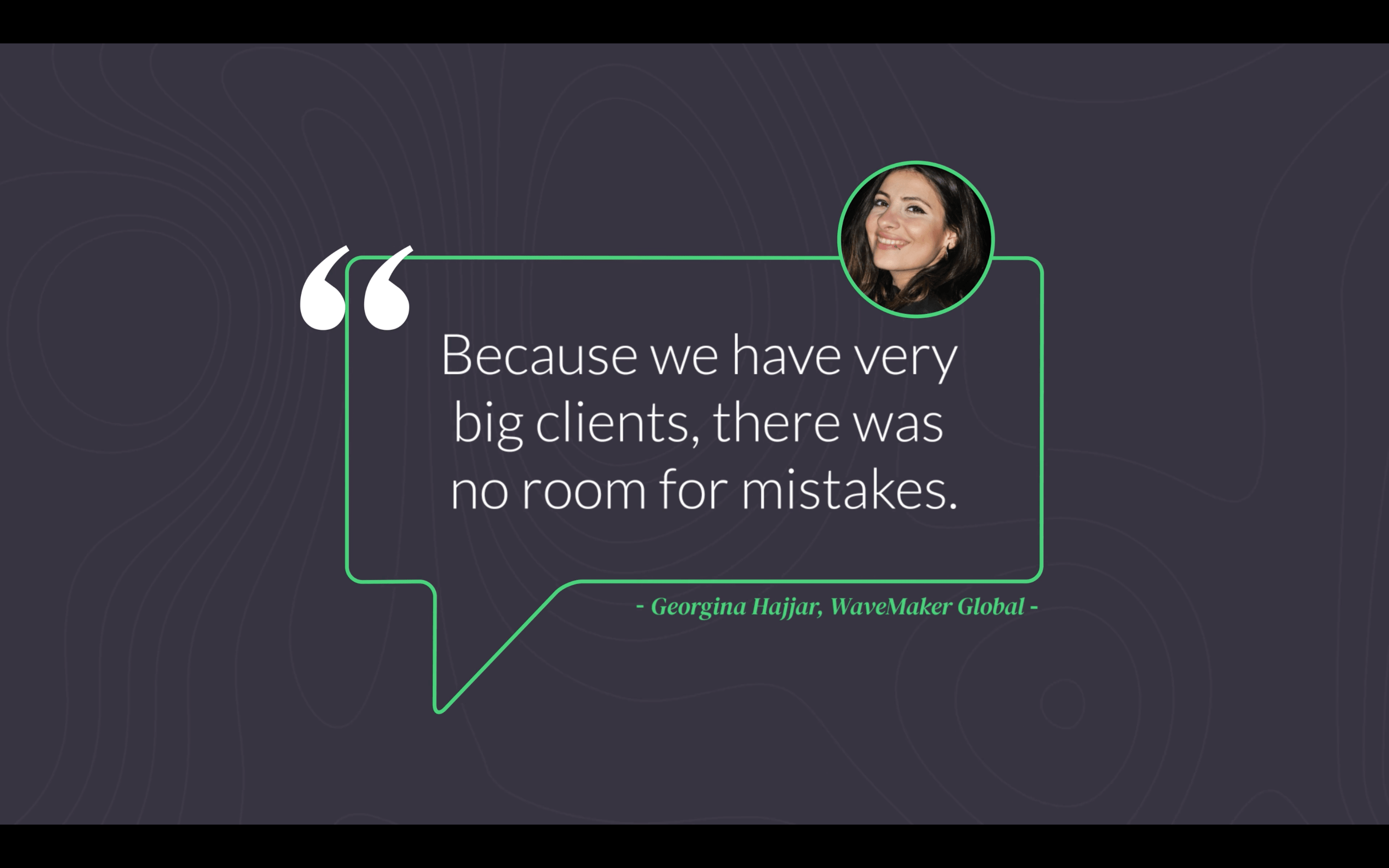
Wavemaker: the office delivered to your door

About: Wavemaker is the second largest media agency network in the world that specialises in content development, precision marketing, commerce and marketing technology.
HQ: London, United Kingdom
Number of Employees: 8,500
Clients: Adobe, British Airways, Chanel, Huawei, AXA, L'Oréal
When it looked likely that Dubai would go into lockdown, Georgine Hajjar of Wavemaker took a bold approach. Foreseeing that working-from-home would likely present some technical difficulties for her team, Hajjar made a judgment call, suggesting that employees take their work equipment home with them.
Some teammates were resistant at first, believing that they could work on their personal computers. What Hajjar realized is that they’d probably be working from home for a few months and this would require more than a short-term fix. Hajjar was insistent.
To make this a reality, the team hired a driver and had full set-ups delivered to team members’ homes, enabling them to continue work without any major roadblocks.
GMR Marketing: Hybrid solutions
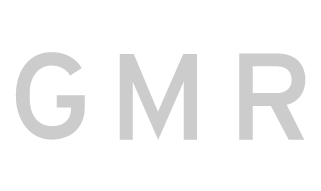
About: Founded in 1979, GMR is an innovative global experiential and sponsorship agency that creates, consults and activates in more than 70 countries, covering every continent from 23 offices in 12 countries.
HQ: Wisconsin, United States
Number of Employees: 1,300+
Clients: NFL, Visa, Cisco, Microsoft, Pepsi, HBO
As we’ve pointed out, sharing video files is a massive problem because these files tend to be, well, massive. At GMR Marketing, Andy Hayman moved their post-production team to WFH set-ups one week before the official shutdown, and instigated a hybrid solution to tackle the file transfer nightmare. Again, forethought and planning were key to success.
An extra week gave GMR time to set up VPN/VPC (Virtual Private Cloud) access for remote employees — enabling access via a scalable storage solution. Employees brought additional project files home on hard drives, so their work could carry on without major disruption. A virtual cloud meant no dark clouds on the horizon for this team!
FCB: A ‘genius’ idea

About: FCB (Foote, Cone & Belding) is a global, fully integrated marketing communications company with a heritage of creativity and success dating from 1873. FCB focuses on significantly changing consumer behavior to the benefit of its clients, its people and society.
HQ: New York, United States
Number of Employees: 8,600
Clients: Levi’s, Burger King, Coca Cola, Cottonelle, FDA, Sport England
When FCB’s Kerry Hill saw the storms of crisis affecting workflows in China, she began a brainstorm of her own. With 60 people working on high-powered machines in a studio, the transition to WFH didn’t look straightforward. Hill asked her team’s artists if they wanted to use their home equipment or if they’d prefer the company to provide them with equipment. Understandably, most employees felt they’d require professional-level equipment to do their jobs right.
But how could they get everything up and running? Borrowing an idea from Apple, FCB set up a ‘genius bar’ in the office. IT professionals worked to load and test the hardware and software that employees would need to continue their work remotely. By enacting this plan, Hill says, “We literally deployed 60 people to their home studios in about 48 hours!” The results? “Just out of Chicago alone, since March 13, we’ve done about 283 pieces of video content.” Genius, indeed!

We have a nimble, agile business model. We had to figure out a way to offer solutions to our clients.
- Kerry Hill, FCB
Mustache: Making lists and taking names

About: Mustache is a full-service creative content agency, part of Cognizant Interactive. We are a team of doers, makers, and thinkers that love content and are subject matter experts in…
- Integrated campaigns: Integrated Strategy, Creative, and Production in-house, with a focus on full funnel multi-asset campaigns
- Social media: Platform strategy, content strategy, and channel planning, as well as content creation/execution and community management
- Video at scale: Leveraging [our mother company] Cognizant’s global reach
HQ: Brooklyn, New York
Number of Employees: 290k (Mustache/Cognizant)
Clients: Netflix, P&G, Amazon, Facebook, Google, Grammarly
Drawing on her ‘make-it-happen’ production background, Mustache’s Eli Ash touched base with creatives she’d met throughout her career and compiled a catalog of the resources they had at the ready. And wow, did they come through!
There were creatives with in-home studios and professional lighting rigs. There were cinematographers with camera-ready families and stylish homes. Ash took this impressive resource list to her clients, some of whom had been worried about short-term production pipelines, and reassured them of her team’s vast capabilities. This list opened new doors and brought opportunities back onto the table.
Long-term challenges of remote workflows
Short-term challenges require quick thinking, agility, and responsiveness. But remote workflows present longer-term challenges as well — and tackling these problems requires more thought, planning, and investment.
In this section, we’ll look at the broader challenges within remote workflows, including collaboration, team culture, and productivity. We’ll assess these challenges and highlight creative solutions that cutting-edge agencies actioned.
Q: What are the greatest challenges with remote/co-located teams?
Q: Which tool(s) are being used daily to get work done?
Q: Do you have a dedicated resource managing your DAM system?
Building a flexible remote collaboration system
MAM (Media Asset Management) is fundamental to the solutions we see as able to resolve the challenges of remote workflows. Although we will highlight this throughout, it’s worth defining.
A MAM is any system used to store, organize and access media resources — sharing a definition with DAM (digital asset management) or VCM (video content management). However, MAM more accurately denotes software able to deploy advanced management capabilities within both product and archive settings, including:
Direct integration with editors like Adobe Premiere Pro
Multi-user access to single cloud-based files
Edit traceability and ‘undo’ functions
Permission-based access to a unified production and archive environment
Automated proxy creation and conform
Automated basic metadata creation
Advanced metadata creation (using object detection and speech recognition)
From a file-sharing standpoint, the right MAM tool turns the problem on its head — allowing for remote access to cloud-based files, removing the need to ‘share’ files at all. These assets can be edited in the cloud through a permission-based framework, and the same permission settings can be used to provide cloud-based access to archive material. Automated proxy workflows and conform reduce bitrates, allowing for seamless editing in the cloud.
Q: Does your team use a digital asset management system?
Q: Do you have a dedicated resource managing your DAM system?
Even if you expand MAM to include older systems like DAM or VCM, only 41% of teams said that they used MAMs to transfer files, although 62% reported using a MAM system in some contexts. That means 38% of teams were not using MAMs to get their work done, and still more were failing to use them to mitigate large-file problems. In order to confront the ongoing realities of WFH, this is one area that will likely change significantly over the next few months.

A Creative Agency’s Guide to Video Content Management
Learn how to get ready for video content creation at scale, and how to accommodate work-from-home operations.
1. An inability to collaborate
It can be difficult to replicate the naturally collaborative environment of an office space in the digital sphere. This is compounded by the challenges individual team members might face while trying to work from home: slower internet speeds, domestic distractions, and hardware/software issues.
But success is possible. “At some points, we’ve collaborated with 12 people on the same project. In the beginning, it was very, very challenging, but we’ve gotten used to it”, said Georgine Hajjar, Wavemaker.
Possible solutions:
To address problems with collaboration, agencies should consider adopting software that facilitates remote collaboration. A few good examples are:
For video production, Media Asset Management (MAM) is the real linchpin to real-time collaboration. By allowing permission-based multi-user access to single video files, video editing can be approached in a similar way to collaborating in a Google Doc. This eliminates the need to check that every last shared file is up-to-date, easing the administrative burden on the team and ending version-control disasters once and for all.

Long story short, we’ve been really, really pushing ourselves to rely on technology to help us with our production workflow.
- Kerry Hill, FCB
2. Reduced creative energy
During the lockdown, teams have struggled with waning inspiration. FCB’s Kerry Hill pointed out, “I do know that some of our creative artists are struggling because they’re in the same physical space every day. And they’re feeling like they’ve got to really start to do some things to get exposed to new experiences to help them stay creative and think more broadly and freely about ideas.”
Possible solutions:
Creative slumps call for innovative solutions. But one way to encourage creativity is by relying on the tried-and-true methods that worked during normal times. While traditional ‘team-building’ activities and after-work drinks events might not be possible at the moment, there’s no reason they can’t happen digitally.
3. The need for decentralized decision-making
Whether or not we tend to think about it, countless decisions are made between the start and completion of a project. Project leads, creative directors, and team leads are all called upon to make decisions on choices offered up by their team members — should we cut away here, or there? Does this soundtrack sound better, or this one? Do you prefer the fade to black, or fade to white?
When creatives want input from leads during a production process, it’s relatively easy just to call someone to your workstation in the office. This is not so easy when the team is distributed geographically. There are also inevitable delays that emerge when trying to get a busy person’s attention during a remote ‘workday’. And once again, the issues of file transfer bubble up here.

Our directors have been given a little bit more autonomy at the front-end to make a director's cut before the creative director, copywriter and art director come in and have their pass at it.
- Eli Ash, Mustache
Possible solutions:
There are really two solutions to the challenge of remote collaboration:
- Empower more team members to make creative decisions.
- Improve remote collaboration through cloud-based access to video files.
The right answer likely resides somewhere between the two. Even in a scenario in which creative teams can remotely collaborate within single cloud-based files, there are still delays in communication. Particularly when remote teams are located within different time zones, it can take a couple of hours to get a response. A critical part of the new normal will hinge on empowering more people to make decisions about what good looks like, and how to proceed.
4. Slow WiFi
Slow wifi is another major issue for remote workflows. Slow internet speed is compounded by many factors, including the need for team members to share a connection with family or housemates in the same property and overall surges in area home network usage. Slow internet speeds are especially frustrating when trying to download, upload, or access large files — a key issue for remote video pipelines used by distributed production teams.
Possible solutions:
Solving WiFi connectivity issues has two components:
- Improve at-home broadband.
- Reduce bandwidth demands for creative projects.
Improving home offices: With more functions moving to a WFH environment, cost savings are made on behalf of businesses. Less money is spent on amenities, keeping the kitchen stocked, and we may even see office downsizing in the future. This frees up money to spend on at-home improvements.
As people’s homes become offices, creative agencies should think about investing in those workspaces. That might mean covering part of the cost of a WiFi upgrade. You should also educate your staff on the intricacies of setting up effective networks.
Pro tip: Remember that consumer broadband packages don’t always have the same upload and download speeds — and the “headline” speed quoted is generally the faster of the two. Particularly for video editing, having fast upload capabilities is important.
Reducing bandwidth: Keeping bandwidth usage to a minimum is another area in which the right Media Asset Management tool will excel. By creating proxy-based workflows, bandwidth demands can be dramatically reduced.
If you want to deploy this solution, it’s essential that you look for reliable software that can deliver high ‘frame accuracy’. Each frame within your proxy must be at the exact timecode as the equivalent frame within the master file. High frame accuracy allows for your ‘offline edits’ to be transposed accurately to the larger files online.
To be effective, proxies must also be condensed — if a proxy isn’t small enough, you’ll experience delays or even seize up your system. That said, your proxies must also be high-resolution enough that you can edit effectively. Striking this balance between quality and size is the key to success — a good MAM will allow for proxy files with broadcast quality at 2Mbps.
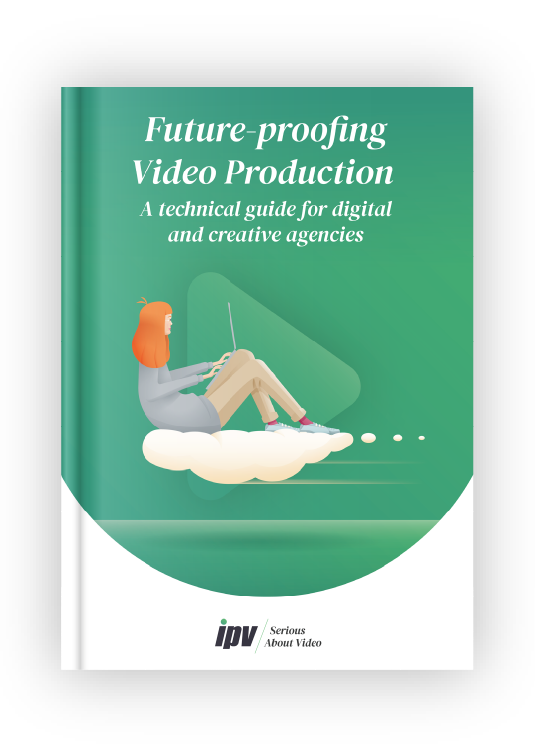
Future-proofing Video Production:
A technical guide for digital and creative agencies
Learn how to merge creative and technical assets into a unified system that enables effective & continued delivery of assets.
5. Travel restrictions and on-set health concerns
Although we hope that travel restrictions will lessen over the coming months, building up long-term redundancies is an important element of being prepared for future lockdowns and potentially years of disrupted international travel.
Even domestically, on-set filming has become much more difficult, or in some cases, even impossible. The need to accommodate social distancing practices is not realistic in all filming environments. The ability to bring freelancers or outside contractors into on-site production has also diminished. In post-production, travel restrictions have hit creatives who are now forced to work at home, often working on less professional equipment.
Possible solutions:
Overcoming travel restrictions can be approached in three ways.
Looking to the longer-term future, outdoor shoots (with social distancing measures in place) or drone-based shooting (even for non-traditional drone shots) might be possible before closer on-set or small studio work. Equally, going even further afield to international teams to do live shoots might provide an alternative. Some countries and regions will be in lockdowns at different times, so on-set shooting could be distributed to places where lockdown measures have been relaxed. In every instance, remote collaboration is key to making it work.

80% of the projects we were doing involved live-action shooting. A good majority of our projects had to be shifted to post-only.
- Eli Ash, Mustache
6. Footage access
Video files are big. Really, really big. At work, with superfast intranet connections or local servers, teams can access these files quickly and easily. But, as we’ve mentioned a few times, this is not such an easy feat at home. And when working with slower internet speeds, any mistakes with file selection (caused by mistagging or similar issues) become multiplied. Providing secure access to footage is also critical.
Possible solutions:
Cloud-enabled access is the future of file sharing. As we have addressed again and again, providing remote access through the permission-based framework of a MAM is critical to flexible and agile access to footage. This applies to both production and archive material, and needs to be firmly in place before effective remote workflows are able to flourish.
7. Storage and security
Storing files in a safe, secure place is essential to retaining client confidence. Sending files through the public cloud (the internet) has often been deemed too insecure to be a viable option. Although many teams had to seek quick fixes in the short-term, successful futureproofing requires a more considered approach. Most agencies and clients agree that security must be taken seriously if remote collaboration is going to remain a reality.

We want our clients to know that even though we are working remotely, their content always has and always will be safe.
- Andy Hayman, GMR Marketing
Possible solutions:
You can secure your data via encryption software, but you’ll need to manage that security within a repeatable process safeguarded from human error. This means setting specific levels of access for different users and tracking access to your footage.
MAMs deliver all of these security features in a centralized package:

Crafting customer engagement:
Advanced video strategies for digital and creative agencies
Learn how to deliver engaged storytelling at scale, and take advantage of the creative shifts across the customer engagement landscape.
8. Creating content that stands the test of time
The current era won’t last forever, and creative agencies have been looking for ways to ensure that their clients’ content remains relevant well into the future. Eli Ash emphasized the importance of ensuring that content looked as much like a normal commercial as possible. For Ash, this meant making content, “that’s relevant even when the situation changes, hopefully for the better.”
Possible solutions:
As we’ve mentioned, solutions such as post-production on stock and/or archive footage and 3D animation can fill gaps in production or even become the whole production. Andy Hayman notes that many of GMR’s clients are repurposing existing content, and this appears to be an industry-wide trend. In these cases, MAMs can simplify this process by enabling your team to search your archives remotely.
However, many cutting-edge agencies understandably wanted to prove that they could do better than simply relying on old footage or post-production tricks. Mustache, as you’ll recall, took inventory of resources available within their creative network and presented this information as reassurance to clients that the show could go on, even in lockdown. They quickly established an infrastructure to create fresh footage under the new conditions.
Building upon this innovative approach, Eli Ash’s team has been breaking up what would be one-day shoots into multiple ‘mini-shoots’. They’ve also found that sourcing and shipping professional-quality equipment for talent to use at home has been a game-changer. Getting creative within the limitations of social distancing has allowed Mustache to continue producing the high-quality, highly original content they’re known for.
Ultimately, the challenge of creating compelling and resonant content is the same as it’s always been. You now need to think creatively about how it can be achieved using the new remote frameworks we have described throughout.
Success in the face of hardship
Now that we’ve presented some of the challenges that many agencies have faced and will continue to face, let’s take a look at some success stories! From bottling up reassurance to keeping things light to dreaming up innovative logistics ideas, here are some of the ways top creative agencies are making their mark in the ‘new normal’.
Wavemaker: Turning a negative into a positive
As lockdown started, Wavemaker was in the process of developing an advertising campaign for a well known cat food company. The original idea had people filming outside, and obviously that wasn’t going to happen. A re-work was needed, and it was needed fast.
The solution that Georgine’s team landed on was to turn the crisis into the opportunity. Pet owners all over the world were going to reunite with their furry friends — 24/7. What better time to create a campaign centered around what those pets really get up to while we are at work.
To sidestep filming logistics (and create an engaging and fun campaign), Wavemaker publicly sourced the footage with a UGC competition. The winners were selected via Instagram polls and won a hamper of cat-centric goodies.
The results were impressive:
- 1.3K participants
- 5K share
- 6.5M reach
- 260K clicks
- 46K reactions
- 1.5K comments
The UGC videos were then repackaged as funny cat memes6. The client got a series of great ads, and engaged members of the public created memorable experiences with a brand that was able to bring them a slice of fun during the early days of lockdown. It’s hard to find better creative thinking than that.

Mustache: Staying light in difficult times
As we’ve discussed, teams working in production are seeing a growing number of new issues arising around shoots, many of which are currently being shot by the talent and remotely directed via teleconferencing software. Skilled directors can direct well from anywhere, but as Eli Ash points out, “It's hard to keep the energy up when on video calls — there’s an energy to a shoot that is hard to replicate on Zoom.”
To address low energy and impaired creativity on shoots, Eli Ash’s team found success by encouraging the talent to take regular breaks and keeping the mood as light as possible. She notes that it’s vital to acknowledge how stressful it can be for one person to set up a whole shoot. And this advice doesn’t just apply to shoots — industry-wide, people are often going beyond their standard job descriptions, so leaving space for levity and humor is key to keeping the energy up and the creative juices flowing.

FCB: Best practices in a changing world
In between dealing with current challenges, Kerry Hill’s team has begun discussing and planning for the future. And her team agrees that when on-set shoots become possible again, they’ll probably look a little different. For instance, there will be new challenges due to the time it takes to sanitize sets, props, and wardrobe pieces. “Normally, props and wardrobe are rented,” Hill explains. But while file-sharing is a thing of the present and the future, it seems that physical object sharing might be a thing of the past, at least without special measures in place.
On that note, Hill says she’ll be interested to see how these challenges breed more innovation, leading to new companies popping up that specialize in cleaning, or corona-safe rentals. Hill also notes the logistics of maintaining social distancing among crew and talent. The future might include fewer people actually on-set, staggered arrival times, and separating different parts of the team into distinct physical spaces. “It’s going to be a change in the way we keep people safe. It’s sort of a judgment-call situation and doing what we feel are the best practices. And we’re hesitant to say ‘best practices’ because we don’t know yet what’s best. They’re just practice.”

Curator for Adobe
Gone are the days of disorganised folder systems and hours spent on admin. Check out this quick video demo to see how you can spend more time creating with Curator.
Building a sustainable future
Agencies have been adept at solving the short-term issues that have arisen. But now it’s time to look at how these solutions might contribute to the bigger picture. Here, the bigger picture means building a sustainable future — for both agencies and their clients. According to Andy Hayman, the brands and agencies “using humor and sincerity are the brands the customers will turn to during the crisis — and after it.” We couldn’t have put it better.
Taking humor seriously and running an honest operation are two great pieces of advice (thanks, Andy!), and the thread underlying both is flexibility. Remaining flexible is vital to long-term success in the industry, and our current crisis has highlighted this like never before.

We didn’t want to look for solutions that would simply work in the interim, we wanted to set ourselves up for future growth.
- Kerry Hill, FCB
Flexibility is necessary to stay relevant, especially in rapidly changing circumstances. As Eli Ash says, “We have to keep being innovative and keep evolving. Next week is going to look totally different from this week. And we’re going to need to know about new options, new solutions, new best practices, and new safety regulations every single week.” In other words: get ready and stay flexible.
We believe that the future of digital and creative agencies will revolve around:
The value of video
Video’s importance as a creative output was evident before our current crisis, but many teams believe that the value of video will continue to rise well into the future. Kerry Hill believes that “more types of content production and production opportunities will actually come out of this.” Of course, pivoting quickly and leaning into these new possibilities is easier when working on a solid, stable technological foundation.
Q: Is there a tool you do not have today that the current remote work environment has highlighted as a need?
Key insight: 63% of teams want to use cloud-based tools to help them with video production.
Workflow changes forced by the pandemic have shed light on many team’s strengths, but they’ve also revealed areas for improvement. For Kerry Hill’s team, the challenge was found in “the technical side of it — storage backup plans, how we prepare for next time.” The crisis has highlighted some glaring gaps in infrastructure: 33% of teams now recognize that a MAM type tool will be necessary to ensure business continuity in the future. “Because,” as Hill says, “certainly no one wants to be caught off guard ever again.”
How IPV can help
The pandemic may have caused major disruptions to production workflows, but the demand for video content isn’t going anywhere — in fact, it’s likely to swell as more and more brands move their focus to the digital world. Having the right team is as important as it’s always been, and supporting your team members with the right technology helps you collaborate and deliver on ever-evolving client demands.
Working remotely on video production presents endless challenges — but as you might have gathered, most of these issues can be addressed with one easy-to-use tool. A MAM solution can improve your video creation, storage, and remote workflows. It allows you to repurpose archive material, streamline the collaborative process, and enable creative review of in-progress and finished projects.
Automating these processes frees up your time to focus on cultivating creativity — and delivering the high-quality work your clients have come to expect.
Committed to helping creative agencies deliver
To help creative agencies deliver collaborative remote workflows at lightning speed, we’ve developed a quick-deploy version of our MAM software. CuratorNow is an all-in-one, cutting-edge cloud video editing suite that can get your operation into the cloud in as little as 36 hours. CuratorNow supports programs such as Adobe Premiere Pro, which means your projects can go on remotely, and your teams can carry on with their creative work with minimal training and interruption.
Of course, our MAM is not the only solution on the market, but it is one of the most advanced, and it can provide all of the security and access solutions we’ve discussed within 36 hours. You can also upgrade to a fully bespoke standard Curator package later, once you’ve settled in.
One of the features we’re most proud of is Curator’s proxy system, which delivers frame-accurate proxies — smaller versions of your video files. You can edit these proxies and then the changes you make are recorded to the full-size, high-res assets, which can be rendered in the cloud. This method cuts bandwidth demand by 98%, so it doesn’t matter if ‘locked-down’ family members or housemates are binging shows on Netflix all day.
Curator also makes file ingestion easy. The software logs all the vital metadata, meaning that you bypass the problem of downloading the wrong file and the need for large, slow, tedious file transfers in the first place. Searching through your media assets is easy with our intelligent search. No more endless waits for files to download. No more having files fail midway through that endless wait. No more finding out after the endless wait that you transferred the wrong clip because Doug mislabelled the files again...

Of course, technology is just one piece of the working-from-home puzzle. You’ll also need to make smart creative choices and cultivate a culture that is willing to experiment and learn, react quickly to client demands, and adjust to changing circumstances. The right technological tools won’t serve you well if you don’t update your workflows. And if you don’t have the right creative talent, no process or tech update will allow you to succeed.
Flexibility and agility, humor and levity, creativity and sharp instincts — we can’t offer you these qualities in a piece of software (at least not currently). But we can offer you a software that supports you in what you do best. Lights (at home), (iPhone) camera (rigged to a gimbal), action!
Ready to take a closer look at Curator?Book your time with Gabrielle when it suits you
Resources

A Creative Agency’s Guide to Video Content Management
Learn how to get ready for video content creation at scale, and how to accommodate work-from-home operations.
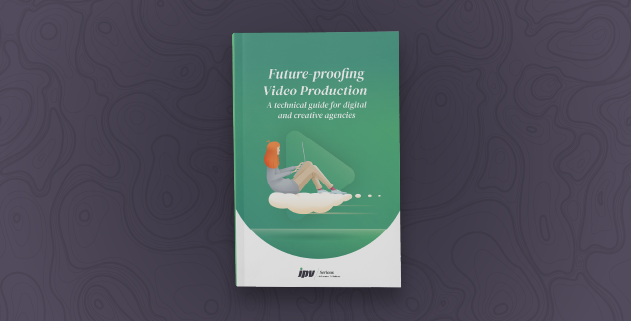
Future-proofing Video Production:
A technical guide for digital and creative agencies
Learn how to merge creative and technical assets into a unified system that enables effective & continued delivery of assets.

Crafting customer engagement:
Advanced video strategies for digital and creative agencies
Learn how to deliver engaged storytelling at scale, and take advantage of the creative shifts across the customer engagement landscape.

Curator Clip Link
Stop searching and start finding with Curator Clip Link's AI-enabled faceted search. Access frame-accurate 2% proxy streams of all your creative assets from anywhere in the world.

Curator for Adobe
Gone are the days of disorganised folder systems and hours spent on admin. Check out this quick video demo to see how you can spend more time creating with Curator.

Curator Connect
Supporting all major camera cards and video formats, Curator Connect enables media managers to ingest and tag video anywhere in the world through a simple user interface.
References
https://blog.hubspot.com/marketing/state-of-video-marketing-new-data
https://www.wordstream.com/blog/ws/2017/03/08/video-marketing-statistics
https://www.cellainc.com/insights/webinars/2020/01/20/in-house-creative-industry-report-insights-and-highlights/
https://www.nysscpa.org/news/publications/the-trusted-professional/article/study-39-percent-of-workday-spent-on-actual-work-060717
https://www.thirdlight.com/articles/the-business-case-for-media-management-software
https://www.youtube.com/watch?v=7Vfb-cY_CJk
Additional references
Cella: 2020 In-House Creative Industry Report
Cella: COVID-19 Impact on Creative, Marketing and Digital Teams, May, 19, 2020
